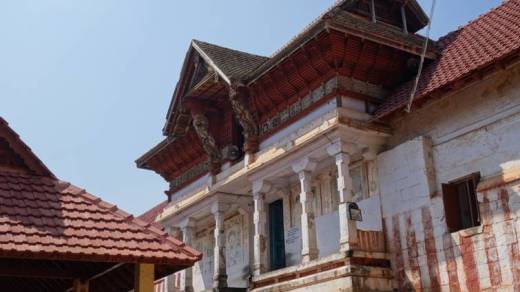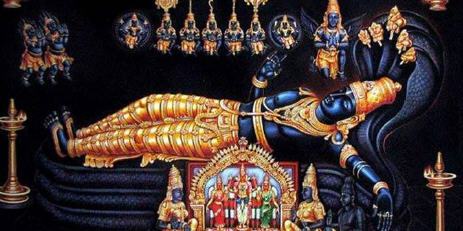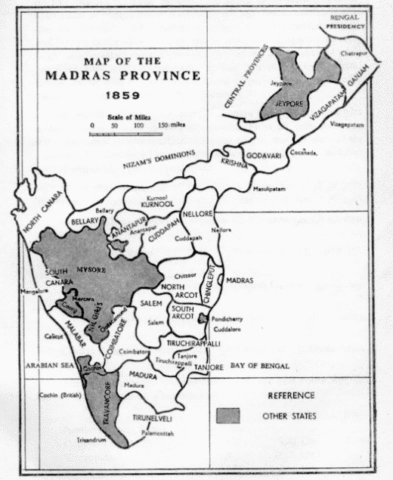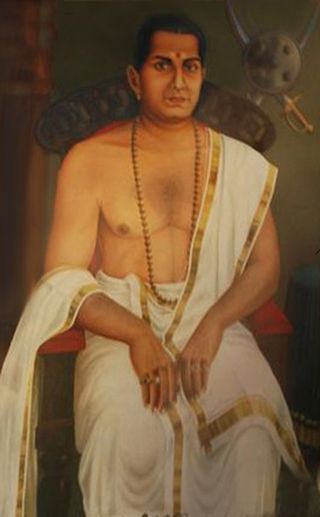Mughal Invasion of Travancore : A forgotten chapter in the history of Kerala

Kerala was the land of intrepid Dharmikas who successfully defended all the invasions for centuries till the one by Hyder Ali in the 18th century. The land of Kerala is blessed with many ancient temples, the importance of which are completely forgotten today.
One such temple is that of Adi Keshava Perumal at Thiruvattar near Padmanabhapuram (the seat of Travancore Kingdom before it was shifted to Thiruvananthapuram by Karthika Thirunal Rama Varma). The Adi Keshava here is revered as the elder brother of Padmanabhaswamy at Thiruvananthapuram. The lord here is resting on Adisesha (Anantasayana Posture) and has to be viewed through three doors. We could see Lord Shiva near Lord Adi Keshava Perumal inside the shrine. This temple is one of the 108 Divya desams (temple sung by Azhwars in Naalaayira Divyaprabhandam) as Nammaazhwar has sung about Adikeshava in his Thiruvaaimozhi.

One of the most ignored events in the Kerala history is about the lesser known Mughal invasion into Kerala during the 17th century which was successfully defended at Thiruvattar. The invasion took place southwards into Venad or Travancore and it was led by a Mughal commander who ventured through the Tamil lands. As a result, treasuries of many temples in Tamil kingdoms were emptied and taken to Travancore with the Utsavamurthis (Murthis of the temple which are brought out in procession for festivals made of metal) of the deities, after hiding the Moolamurthi (main deity inside the shrine made of stone).
At that time, Travancore was in political chaos and since there was no heir, Ashwathi Thirunal Umayamma Rani reigned as the queen of Travancore. She faced a lot of trouble from local landlords called Ettuveettil Pillamar, who were in control of political matters in Travancore, as well as from related branches of the royalty.
The Mughal invaders went on a conversion spree in south, and many islamic practices were enforced upon by the local Hindus by the Mughal invaders. The Pillamar had ran off scared from the Mughal invaders, but due to the appeal of muslims in Travancore army (Travancore was a small state during that time and they had recruited Pathan, Sikh and Tamil soldiers into army to increase the strength of the force) the Mughal raiders had spared the temples of the region.

During the same time, a young Nair warrior from north Kerala came down south for a pilgrimage. This warrior was known as Kottayam Kerala Varma, he belonged to the same royalty of the King known as Kerala Simham or ‘lion of Kerala’, Kerala Varma Pazhassi Raja, who later fought against both the British colonialists and Tipu’s jihad on Malabar Hindus. Umayamma Rani quickly appointed Kerala Varma in control of states forces and he along with Nair army marched on, fighting the Mughal intruders at various places from Thiruvananthapuram.

It was decided that the final battle will take place near Thiruvattar for its strategic position and he camped there waiting for the arrival of Mughals. When the Mughal army arrived, Kerala Varma and his companions were struck by fear and lost all the hopes of victory by the looking at the large number of soldiers in the Mughal army compared to which he was severely outnumbered in 10 to 1 ratio.
That evening after Seeveli or temple procession, Kerala Varma prayed to Adi Keshava and sang the poem named Padasankeerthanam asking for the help of Adikeshava in the battle against adhamric invaders. By the time he finished singing it, his army men were overwhelmed with confidence as they all had a feeling that they had the blessing of Adikeshava, who is revered as the one who protected the world from the demons Keshan and Keshi, and hence started their preparations for battle with high hopes of victory which was completely lost few hours earlier. Kerala Varma successfully fought and defeated the Mughal forces. Shangunny Menon, a 19th century author from Travancore, describes the battle in the following lines:
“This Rajah was appointed Her Highness’ principal counsellor, and commander of all the militia then on the side of the royalists. Kerala Vurmah lost no time in raising a force armed with bows and arrows, slings, swords and lances. The Rajah, under his personal command led the army against the Mogul sirdar and attacked him unexpectedly at Manecaud near Trevandrum. As the sirdar had not a sufficient force near him, all his horse-men having been scattered about between Vurkalay and Thovalay collecting the revenue, he was unable to make a stand and was obliged to retreat precipitately to Thovalay. Kerala Vurmah pursued him and the sirdar was reinforced by a party of horsemen from Thovalay and the other southern districts. He made a stand near the side of a hill at Thiruvatar, and a severe battle ensued.
While the jungles, and rocks with which the locality was covered, presented insuperable obstacles to the Mogul sirdar’s cavalry and threw it into confusion; they afforded the Rajah’s archers and slingers convenient positions for attack and defence. While the conflict was going on, many of the horsemen were killed .and, unfortunately for the sirdar, a nest of wasps, on one of the trees under which he was fighting on horseback, was disturbed by the throwing of a stone from one of the slings and the insects came down in swarms, and stung him on his face and ears. On his attempting to dismount, his horse, being stung by the wasps, threw its rider and ran away. Scarcely had the sirdar fallen on the side of the rock than hundreds of arrows pierced his body. Nor were the slingers idle, for they poured on the hand of the great commander a volley of stones. The fallen chief was soon killed and his army was utterly defeatedâ€
Kottayam Kerala Varma’s royalty was also famous for endorsements of arts and literature. Another king from his royalty known as Kottayattu Thampuran authored many works and contributed to the development of Kerala’s most famous art form of Kathakali. The Thiruvattar Adi Keshava Perumal temple was ignored by the Travancore royal family after the shifting of capital. It was later looted by Nawab of Arcot, the year of which is shown by some as 1740 which we disagree with for it was the time when Anizham Thirunal Marthanda Varma, who defeated the Dutch and ended the Dutch rule in Bharat, was ruling Travancore from Padmanabhapuram near Thiruvattar. This plundering of the temple by Arcot Nawab might have taken some time in the 19th century but the incidents documented about this have their unique importance.
When the Nawab of Arcot looted this temple, he took away the Utsavamurthy of the temple along with other riches from the temple treasury. Immediately after this, the Nawab’s situation worsened as his kingdom was completely in chaos because of invasions and other law and order problems, and his wife developed serious illness which could not be cured by anyone.
It was at this juncture, Adikeshava appeared in the dream of the Pujari who performed the daily rites at this temple and ordered him to go to the Nawab’s palace and inform the Nawab that if the idol was returned, his wife would be cured of illness and the chaotic situation in his kingdom would see improvement. The Nawab acted accordingly and his wife was cured. The Nawab gifted a silver plate and a cap to Adi Keshava and this is used at the time of seeveli every day.
It was after this incident that the ill treatment of Hindus in the kingdom of the Nawab of Arcot stopped, for he had developed a spirit of respect towards Adi Keshava and his devotees. After the reorganization of states, Thiruvattar came under Tamil Nadu and the takeover of the administration of the temple by the government further worsened its situation because of bad maintenance. Thus, the pride of Travancore being one of the very few Kingdom of the south which defeated the Mughals, and the place where it happened is completely forgotten from the minds of people.
Welcome to Haindava Keralam! Register for Free or Login as a privileged HK member to enjoy auto-approval of your comments and to receive periodic updates.
Latest Articles from HK Special Feature
- Republic Day Tableaux & Regional Pride
- A Day with Hrudaya & Bhagya, Daughters of Veerbalidani Renjith
- Tribute to Nandu Mahadeva ; Powerhouse of Positivity
- Treading the Middle-Path on Temple Management
- Milords! What the judiciary must know before any final verdict on Sabarimala
- How Deendayalji’s Centenary Signified Defeat of Secular Slave Age
- Irom Sharmila, welcome to Kerala!
- Mughal Invasion of Travancore : A forgotten chapter in the history of Kerala
- Why is it only happening in Kerala and for so long?
- Rajarshi of Kochi – A Misunderstood Dharmika


Responses